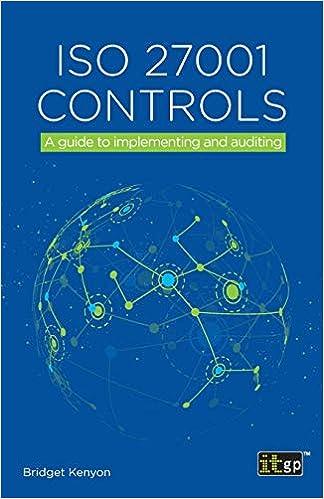Answered step by step
Verified Expert Solution
Question
1 Approved Answer
CASE 1: PICKWICK RESTAURANTS Jaclyn Hargrove is the owner of six Pickwick Restaurants. For the past 10 years, she has always relied on her accountant



CASE 1: PICKWICK RESTAURANTS Jaclyn Hargrove is the owner of six Pickwick Restaurants. For the past 10 years, she has always relied on her accountant to analyze her financial statements. Jaclyn feels that if she were able to understand her financial statements, she would be able to improve her financial performance. More importantly, she would be able to make better decisions that touch on all aspects of her business, from the management of working capital to making investments. Jaclyn has just purchased accounting software that can provide her with monthly, quarterly, and yearly financial statements and, more importantly, all types of ratios that would help her improve her analysis and decisions. Jaclyn asks you for some advice in understand the meaning of her financial state- ments. She shows you her December 31, 2013, statement of financial position and statement of income and asks you to calculate and explain the meaning of the more important financial ratios. To help Jaclyn understand financial ratios, calculate the financial ratios by using the 2013 statement of financial position and statement of income, and explain to her the meaning and significance of each ratio: e. times-interest-earned ratio f. fixed-charges coverage ratio g. average collection period h. inventory turnover ratio capital assets turnover ratio total assets turnover ratio i. profit margin on revenue ratio return on revenue ratio return on total assets ratio return on equity ratio j. k. 1. m. n. Non-current assets Property, plant, and equipment Accumulated depreciation Total non-current assets Current assets Inventories Trade receivables Term deposits Cash Total current assets Total assets Revenue Cost of sales Gross profit Other income Expenses Distribution costs Rent Administrative expenses Finance costs Depreciation Total other income/costs Profit before taxes Statement of Financial Position As at December 31, 2013 (in S) Income tax expense Profit for the year 2,600,000 (700,000) 1,900,000 1,100,000 900,000 120,000 90,000 Equity Preferred shares Common shares Retained earnings Total equity Long-term borrowings Current liabilities Trade and other payables Notes payable Accruals Current income taxes payable 2,210,000 Total current liabilities 4,110,000 Total equity and liabilities Statement of Income For the year ended December 31, 2013 (in S) (350,000) (100,000) (345,000) 4,500,000 (3,300,000) 1,200,000 20,000 (795,000) (120,000) (50,000) (945,000) 255,000 (127,500) 1 27,500 [ Ring 4,110,0
Step by Step Solution
There are 3 Steps involved in it
Step: 1

Get Instant Access to Expert-Tailored Solutions
See step-by-step solutions with expert insights and AI powered tools for academic success
Step: 2

Step: 3

Ace Your Homework with AI
Get the answers you need in no time with our AI-driven, step-by-step assistance
Get Started


